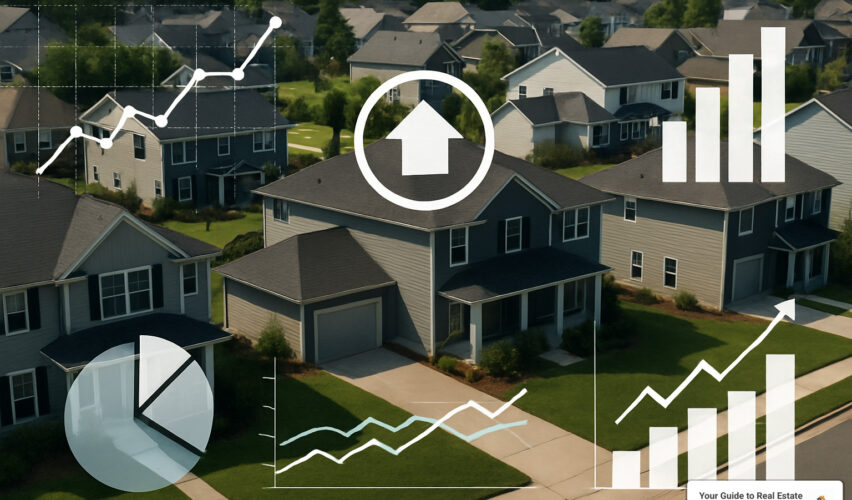Understanding Real Estate Pricing Through Data
How to do a competitive market analysis real estate is the process of evaluating similar properties to determine a home’s fair market value. If you’re looking to quickly understand how to perform a CMA, here’s a simple breakdown:
- Analyze the neighborhood – Assess location, amenities, school districts
- Gather property details – Square footage, bedrooms, features, condition
- Select comparable properties – 3-5 similar homes sold within last 3-6 months
- Adjust for differences – Add/subtract value for features your property has/lacks
- Review market conditions – Determine if it’s a buyer’s or seller’s market
- Establish market value – Calculate final price range based on adjusted comps
A competitive market analysis (CMA) is a powerful tool that helps you understand what a property is truly worth in today’s market. Whether you’re buying your first home, selling your current one, or looking to invest, a well-executed CMA gives you the confidence to make smart pricing decisions.
According to 2022 housing data, we’re experiencing the most competitive market in recorded history. This makes accurate CMAs more important than ever.
Unlike formal appraisals (which cost $300-$500 and are performed by licensed appraisers for lending purposes), a CMA is an informal estimate based on recent comparable sales. The beauty of a CMA is that while professionals often provide them free to potential clients, you can also learn to create one yourself.

Similar topics to how to do a competitive market analysis real estate:
– valuation and market analysis in real estate
Why Pricing Right Matters
Pricing a property correctly from the start is crucial. Overpricing can lead to extended time on market, which often results in eventual price reductions and a final sale price lower than what might have been achieved with correct initial pricing. According to market data, homes that sell within five days have a 57% chance of selling at list price.
Underpricing, on the other hand, might result in a quick sale but could leave thousands of dollars on the table. The goal is to price in the “sweet spot” – competitive enough to attract serious buyers quickly while maximizing your return.
What Is a Competitive Market Analysis (CMA)?
Have you ever wondered how real estate professionals seem to know exactly what a property is worth? The secret lies in what we call a competitive market analysis (CMA). At its heart, a CMA is like a deep dive into the local real estate market to determine what similar homes are selling for right now.
Think of a CMA as your property’s price tag detective. It’s an informal valuation method that helps you figure out a fair market value based on what comparable properties are actually selling for in today’s market. Unlike those quick online estimates, a good CMA considers the unique aspects of each property and neighborhood.
The backbone of any CMA is what insiders call “comps” – these are comparable properties that have recently sold, are currently listed, or perhaps were listed but didn’t sell. By examining these comps and making thoughtful adjustments for differences (like that extra bathroom or updated kitchen), you can arrive at a reasonable estimate of what a specific property is truly worth.
CMAs rely on the “sales comparison approach,” which follows a simple principle: a buyer wouldn’t pay more for a property than they would for a similar property offering the same benefits. It’s common sense wrapped in real estate methodology!
CMA vs. Formal Appraisal
While both aim to determine a property’s value, CMAs and appraisals are different tools for different purposes:
| CMA | Formal Appraisal |
|---|---|
| Conducted by real estate agents or individuals | Performed by licensed appraisers |
| Informal estimate based on market data | Official valuation following strict guidelines |
| Often free or low-cost | Typically costs $300-$500+ |
| Used for listing, offering, or investment decisions | Required by lenders for mortgage approval |
| Can be subjective based on the preparer | Must follow standardized methods |
| Focuses primarily on comparable sales | Considers multiple valuation approaches |
The beauty of a CMA is its accessibility – you don’t need special licensing to create one, though professionals certainly bring expertise to the process. While appraisals follow strict guidelines required by lenders, CMAs offer more flexibility while still providing valuable insights.
For investors especially, CMAs are like gold. They provide the quick market intelligence needed to spot opportunities and make confident decisions in fast-moving markets. According to research on competitive markets, those who master local market analysis through accurate CMAs gain a significant advantage over the competition.
How to Do a Competitive Market Analysis Real Estate – 6-Step Blueprint
Now let’s roll up our sleeves and dive into the heart of what you came here for – a detailed walkthrough of how to do a competitive market analysis real estate. This six-step blueprint will transform you from market analysis novice to neighborhood pricing expert in no time.

Step 1: Neighborhood & Market Snapshot — Start With Location
Begin by exploring the neighborhood with fresh eyes. The school district quality can add tens of thousands to a home’s value. Check the property’s Walk Score – according to research on walkability, homes with higher walk scores often fetch premium prices. Don’t overlook nearby amenities and pay attention to zoning trends too.
Pro tip: Actually walk the neighborhood yourself. No online research can replace the experience of hearing traffic noise during rush hour or noticing how well neighbors maintain their properties.
Step 2: Collect Property Facts
Document every detail that makes this home unique. Start with the basics: lot size, square footage (livable space only), bed/bath count, the property’s age and condition, and all special features that make the home stand out. Finally, verify everything against tax records.
Step 3: Select the Best Comparables
Stay within a 1-mile radius whenever possible and the same school district. Focus on recent sales – ideally within the last 3 months. When selecting similar properties, look for homes that match your subject property in square footage (within 10-20%), bedroom and bathroom count, lot size, age, style, and overall condition.
Remember the golden “Rule of Three“: include at least three closed sales, plus a couple of active and pending listings to capture current market sentiment.
Step 4: Adjust for Differences
Assign feature dollar values based on market data, not personal opinion. In most markets, an extra bedroom might add $5,000-$10,000 to value, while an additional bathroom could add $5,000-$15,000. Don’t forget to adjust for financing concessions and condition adjustments.
Here’s a simple example showing how adjustments transform raw sales data into useful information:
| Comparable | Sale Price | Adjustments | Adjusted Price |
|---|---|---|---|
| Comp 1 | $350,000 | +$10,000 (extra bedroom in subject) | $360,000 |
| Comp 2 | $375,000 | -$15,000 (updated kitchen in comp) | $360,000 |
| Comp 3 | $365,000 | -$5,000 (larger lot in comp) | $360,000 |
Step 5: Analyze Market Conditions
Calculate inventory levels using the months of supply formula. When this number falls below 4-6 months, you’re likely in a seller’s market with upward price pressure. Days on Market (DOM) tells you how quickly homes are selling. The absorption rate provides another valuable perspective. Look for price trends in recent sales and don’t ignore seasonality either.
Step 6: Reconcile & Produce a Value Range
Instead of simply averaging all your comps, use a weighted average that gives more importance to properties most similar to your subject. Calculate the price-per-square-foot from your adjusted comps as a sanity check. Establish a final value range rather than pinpointing an exact value, and based on current market conditions, recommend a suggested price within that range.
Data Sources, Tools & Pro Tips for DIY CMAs
Creating an accurate CMA doesn’t have to be complicated, but you’ll need the right resources to get reliable results. Let’s explore what you’ll need in your toolbox to build a professional-quality analysis.

MLS Access is the gold standard for property data, typically only available to licensed real estate professionals. Public Records from county tax assessor and recorder websites offer valuable property information and sales data that anyone can access. Google Street View has revolutionized remote property analysis, allowing you to virtually stroll through neighborhoods.
For organizing your findings, a simple spreadsheet works wonders. If you’re looking to take your CMA to the next level, specialized CMA Software like Cloud CMA, RPR, DashCMA, or iCMALive can streamline the process. The Realtors Property Resource (RPR) deserves special mention for REALTORS®.
For more comprehensive information about available tools and resources, our Competitive Market Analysis Real Estate guide provides additional insights.
Free vs. Paid CMA Software
Free options include basic spreadsheets you create yourself, limited versions of online valuation tools, and some broker-provided tools for agents. These work well for one-off analyses or when you’re just getting started.
Paid options typically run $10-$45 monthly and offer significant advantages: professional reports with customizable templates, lead-capture features for agents, MLS data integration, visually appealing presentations, and automated adjustment calculations.
If you’re doing a single CMA for your own property, free tools might be sufficient. For regular use or professional purposes, paid software delivers value that justifies the investment.
Beyond the Numbers: In-Person Verification
When you visit a property, pay attention to sensory factors that never show up in listings – traffic noise, neighbor conversations, industrial smells, or that musty odor that might indicate water issues. Curb appeal matters tremendously. Take time to absorb the neighborhood vibe and look for hidden issues that might not be evident in photos. Also check for signs of future developments that could impact property values.
The most accurate CMAs combine hard data with these human observations – blending science with the art of real estate valuation.
Common Mistakes, Limitations & When to Call a Pro
Even with careful research, there are some common pitfalls that can throw off your numbers. Using outdated comps (older than 6 months) can seriously skew your results. Choosing comps from completely different neighborhoods or school districts is another frequent error. Failing to adjust for differences between properties is like comparing a luxury sedan to a compact car based solely on the fact that both have four wheels.
Many DIYers make the mistake of ignoring market trends and conditions or have an over-reliance on automated valuation models (AVMs) like Zillow’s Zestimate.
CMA Limitations
Let’s be realistic about what a DIY CMA can and can’t do. Even the best competitive market analysis typically falls within ±5-10% of actual market value. Highly unique properties present a particular challenge, as do rapidly changing markets where even recent comps can quickly become outdated.
Access to complete sales data remains a significant limitation for non-professionals. In some states, creating a formal CMA for others may require a real estate license.
For more detailed information on these challenges, our Valuation and Market Analysis in Real Estate page goes much deeper into the nuances.
Red Flags That Require an Appraiser
Sometimes, the wisest move is knowing when to call in the professionals. Here are some situations where a DIY CMA simply won’t cut it:
When you’re dealing with unique luxury features, acreage properties, areas with sparse sales data, legal proceedings like divorce settlements, or properties with complex zoning or use issues.
When in doubt, consult a professional. The cost of an appraisal ($300-$500) might seem steep, but it’s a small price compared to potentially mispricing your property by tens of thousands of dollars.
Presenting & Leveraging Your CMA Results
After all the hard work of creating your competitive market analysis, how you present those findings can make all the difference in how they’re received and acted upon. Think of your CMA as a story that needs to be told well – with clear visuals, compelling evidence, and actionable insights.

Visual elements speak volumes. Charts and graphs instantly communicate market trends in ways that columns of numbers simply can’t. For sellers, including a net proceeds estimate helps them visualize what they’ll actually walk away with. For buyers, your CMA becomes a powerful negotiation tool with specific talking points based on the findings.
In rapidly shifting markets, your CMA might have a shelf life as short as 30-60 days. I recommend updating your analysis quarterly at minimum, or even monthly in volatile markets.

Best Practices for Client Reports
Present a clear value range rather than a single price point. Including photos of comparable properties creates an immediate visual connection. Every CMA should include a market trend summary that provides context. Prepare both digital and printed formats of your CMAs. A one-page executive summary at the beginning of your report works wonders. Include your supporting data and methodology notes for transparency.
Frequently Asked Questions about Competitive Market Analysis
How accurate is a DIY CMA?
A thoroughly researched DIY CMA can typically get you within 5-10% of the actual market value – close enough for many purposes! Several factors influence accuracy: the availability of recent, similar comparable sales, market volatility, and your own experience level. Professional CMAs tend to be more accurate because agents have better access to comprehensive MLS data and have developed an intuitive sense for making adjustments.
How often should I redo my CMA?
In relatively stable housing markets, refreshing your analysis every 3-6 months usually suffices. But in dynamic environments, monthly updates might be necessary. Always create a fresh CMA before major decisions like setting your listing price, making an offer, deciding whether to refinance, or evaluating a potential investment.
Can I perform a CMA without MLS access?
Yes, you absolutely can create a CMA without MLS access. Public records from your county assessor’s office provide basic property details and sales prices. Websites like Zillow, Redfin, and Realtor.com offer recent sales data that can give you a solid starting point.
The limitations? Without MLS access, you might miss crucial details about property condition, seller concessions, interior features, and financing terms. If accuracy is paramount, consider partnering with a real estate agent who can provide a professional CMA.
For more detailed guidance on valuation techniques, check out our comprehensive guide to valuation and market analysis in real estate.
Conclusion & Next Steps
After diving deep into property valuation, you now have the blueprint for how to do a competitive market analysis real estate like a pro. While it requires attention to details, the confidence you’ll gain in your real estate decisions is worth the effort.
A CMA is that perfect blend of science and art – you’re analyzing hard data while also making judgment calls about what makes a property special. You’ll get better with each analysis you complete, developing an increasingly refined sense of local market values.
Buyers who understand CMAs craft offers that get accepted without overpaying. Sellers who price based on solid CMAs typically sell faster and for better terms. And investors who live and breathe by accurate CMAs consistently find the diamonds in the rough that others miss.
In today’s information-rich market, the person with the best analysis often wins. Your carefully crafted CMA gives you that edge – whether you’re negotiating a purchase, setting a listing price, or evaluating an investment opportunity.
Want to continue building your real estate knowledge arsenal? Explore our by-the-numbers insights section for more data-driven guidance. At YourGuideToRealEstate.net, we believe that informed decisions lead to better outcomes, and we’re committed to helping you steer every step of your real estate journey with confidence.



















